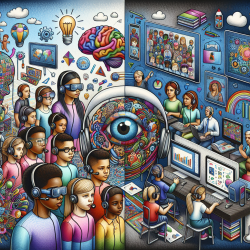Introduction
Giant Axonal Neuropathy (GAN) is a rare, progressive childhood disorder affecting the peripheral and central nervous systems. Characterized by symptoms such as facial weakness, scoliosis, and sensory-motor neuropathy, GAN presents significant challenges for practitioners. The recent study, "Expanding the genetic spectrum of giant axonal neuropathy: Two novel variants in Iranian families," published in Molecular Genetics & Genomic Medicine, offers new insights that can enhance diagnostic and therapeutic approaches.
Understanding the Research
The study by Ashrafi et al. (2023) identified two novel variants in the GAN gene in two unrelated Iranian families. These findings expand the known mutation spectrum of GAN, offering new avenues for diagnosis and treatment. The research utilized whole-exome sequencing (WES) and Sanger sequencing to confirm these variants, highlighting the importance of genetic testing in diagnosing GAN.
Implications for Practitioners
For practitioners, understanding these genetic variants is crucial for improving patient outcomes. Here are some key takeaways:
- Enhanced Diagnostic Accuracy: Incorporating genetic testing, such as WES, can lead to more accurate diagnoses, allowing for earlier intervention and tailored treatment plans.
- Personalized Therapy: Knowledge of specific genetic variants enables practitioners to develop personalized therapy plans that address the unique needs of each patient.
- Interdisciplinary Collaboration: Collaboration with geneticists and neurologists can enhance the overall care plan, ensuring comprehensive management of GAN symptoms.
Encouraging Further Research
While this study provides valuable insights, it also underscores the need for further research. Practitioners are encouraged to engage in collaborative research efforts to explore the full spectrum of GAN variants and their implications for therapy. By contributing to ongoing research, practitioners can help advance the field and improve outcomes for children with GAN.
Conclusion
Understanding the genetic underpinnings of GAN is essential for improving diagnostic and therapeutic approaches. By integrating the findings from this study into practice, practitioners can enhance their skills and contribute to better outcomes for children with GAN. For those interested in exploring the original research, please follow this link: Expanding the genetic spectrum of giant axonal neuropathy: Two novel variants in Iranian families.










